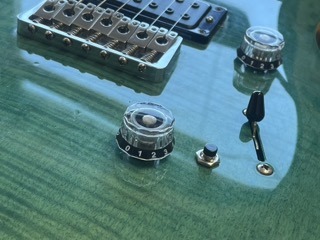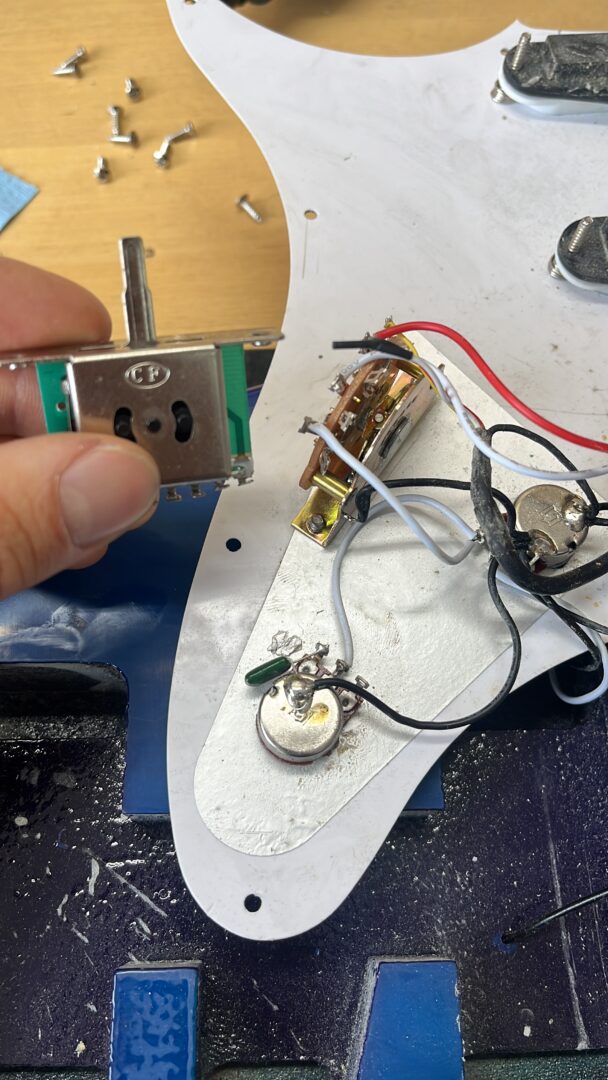
Understanding Guitar Potentiometer Issues
The potentiometer (pot) of a guitar is a crucial electronic component used to control the volume, tone, or other aspects of the instrument’s sound. Its failure can manifest through buzzing, loss of control, or unexpected variations in volume or tone. When replacing it, several aspects must be considered.
1. Noises and Crackles

If you notice buzzing, crackling, or signal cuts when turning the potentiometer, it may indicate a problem with the pot. Wear, dirt, or faulty contacts inside could be the cause.
2. Loss of control

If the potentiometer no longer properly regulates volume or tone, or becomes difficult to adjust accurately, it may indicate a failure.
3. Volume and tone variations
Unexpected changes in volume or tone without potentiometer manipulation may indicate component failure.

4. General condition

Like any mechanical component, potentiometers have a limited lifespan. If they have been in service for many years without replacement, even if they still work correctly, it might be time to change them to ensure optimal performance.
5. Upgrading pots
To improve your guitar’s sound quality, consider replacing potentiometers with higher-quality models. This can have a positive impact on sound clarity and control responsiveness.
When looking to replace a potentiometer on your guitar, here are some points to consider:
Resistance value (ohms) : Choose an appropriate value to match your guitar’s pickup type. Generally, 250k ohms for single-coil pickups and 500k ohms for humbuckers. 25K or other for active.
Pots type : Linear (B) or audio (A) potentiometers are common. Audio potentiometers are often used for volume control, while linear ones are preferred for tone controls.
Type and size shafts : Ensure the width and shape of the potentiometer shaft match your guitar’s control knobs.
Pots quality : Opt for potentiometers from reputable brands like CTS, Bourns, and Alpha, offering precise tolerance and robust construction.
It is therefore important to choose a potentiometer that matches the appropriate resistance value, the necessary type of potentiometer, compatibility with control knobs, and reliable construction quality. If in doubt, schedule an appointment or consult a luthier or electronics technician for professional advice.


